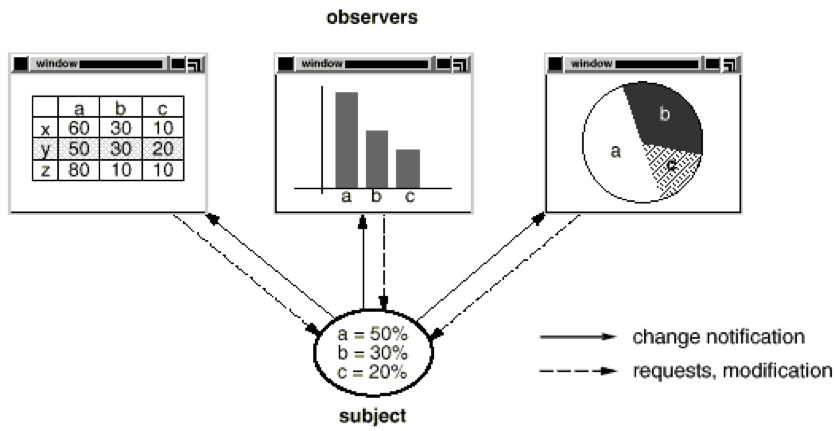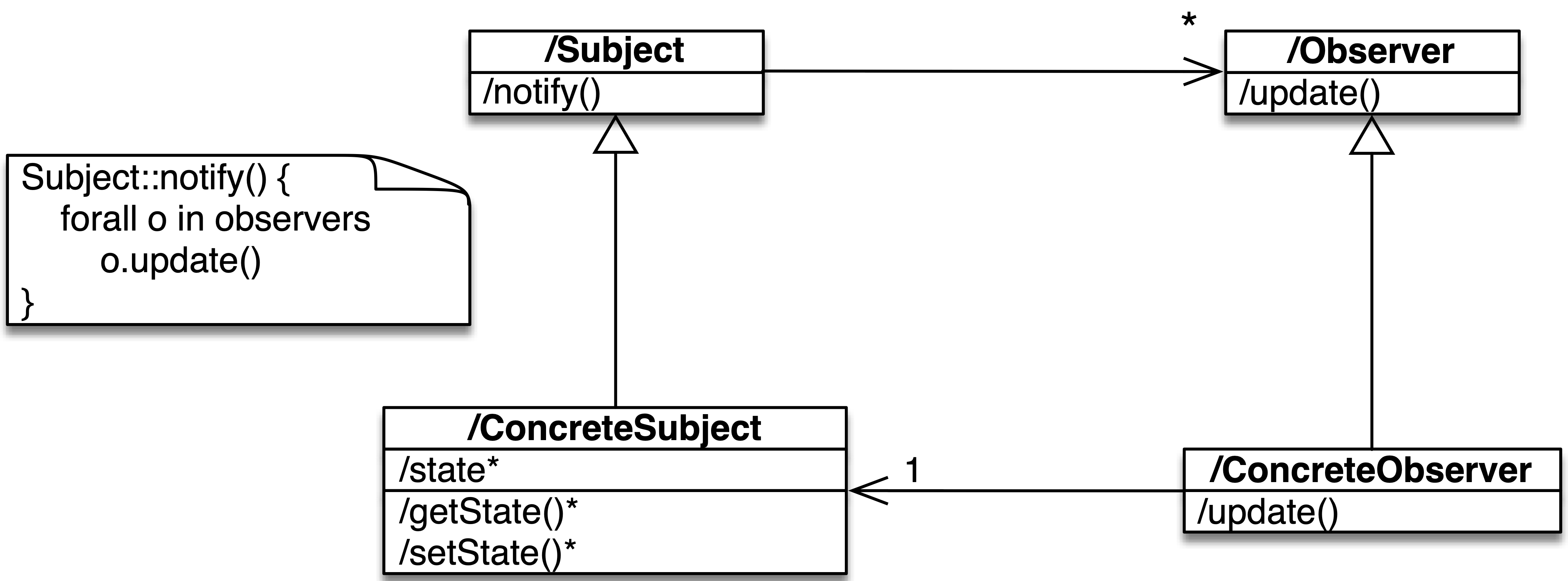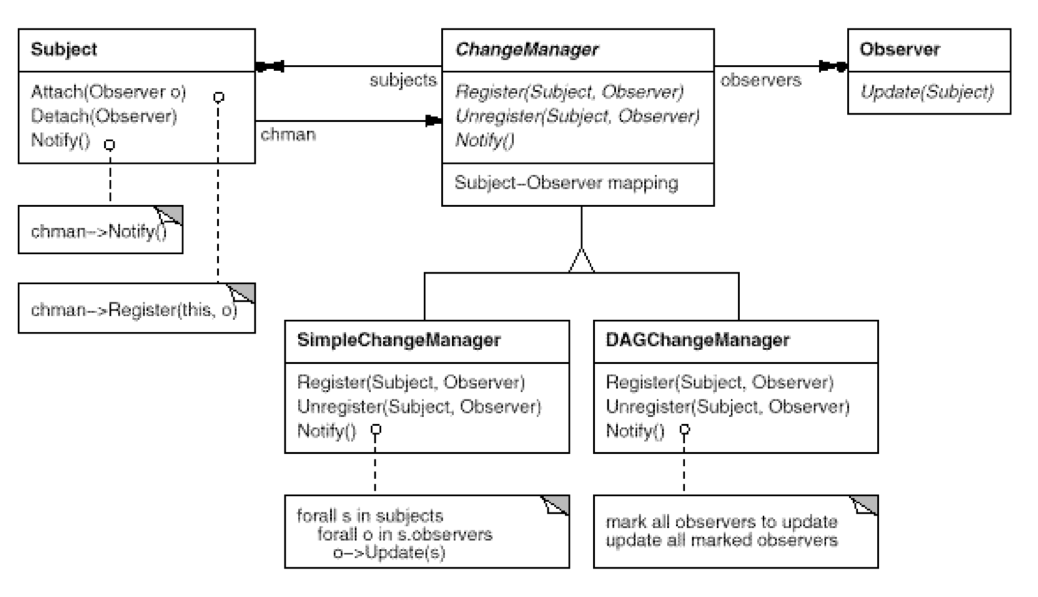Observer
Gamma et al. 95
Intent
An observer defines a dependency relationship between objects so that, when the state of an object changes, all its dependents are automatically notified and updated.
Motivation
A frequent side effect of partitioning a system into a collection of cooperating classes is the need to maintain consistency between interconnected objects.
We don’t want consistency to be achieved by closely linked classes, because this would reduce their reusability
Motivation Example

Applicability
Use the Observer pattern when:
When a concept has two different and dependent aspects (e.g. interface and business data),
The encapsulation of these aspects in separate classes allows them to vary and be reused independently.
Structure

Consequences
The subject does not know any detail about its observers (nor their quantity)
Unexpected updates: it is hard to know the actual cost of an update (ie. what happens when
updateis called?)
Consequences (Cont.)
New observers can be added without changing the subject nor the other observers.
Abstract coupling between the subject and the observers:
The subject is not interested in the observer class,
A subject and an observer can belong to different levels of a system (see the Proxy pattern).
Implementation Trade-offs
The association between the subject and the observer may take many forms: collection, dictionary, etc.
Observation of more than one subject,
Different ways to trigger the notification (subject, customer),
Subject destruction management: should observers be destroyed when the subject is destroyed? or simply notified?
Implementation Trade-offs (Cont.)
Different notification protocols:
Two main possibilities:
Either Push (the observer receive information about the change that occurred and can use it directly)
Or Pull (the observer only knows that something changed, and then needs to discover by itself what changed)
Observation of certain aspects of the subject (selective notification), ie. possibility to subscribe to specific changes in the subject
Implementation Trade-offs (Cont.)
Encapsulation of the complex semantics of updating:
if an operation modifies different subjects, it can be better to notify observers only at the end,
use a change manager (see next slide).
Change Manager

Author and Date
Design Patterns: Elements of Reusable Object-Oriented Software. Erich Gamma, Richard Helm,Ralph Johnson, and John Vlissides. Addison Wesley. October 1994.